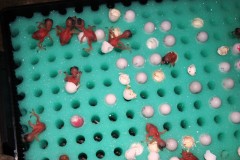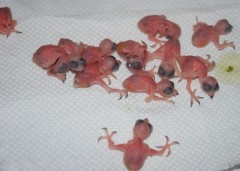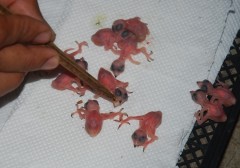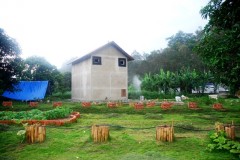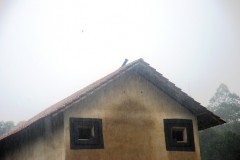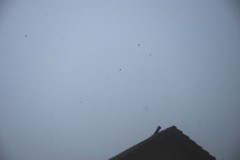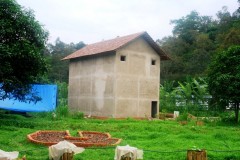Mar 25, 2010
Caviar of the East - Pavlovian Imprinting
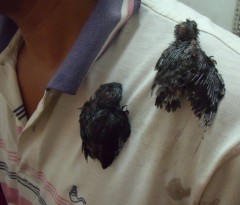
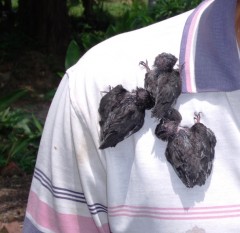
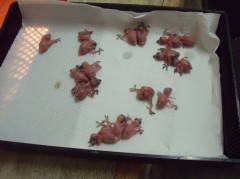
09:39 Posted in Blog | Permalink | Comments (1) | Tags: swiftlet farming, walit, walet, swiftlets, aerodramus fuciphagus, aerodramus maximus
Feb 26, 2010
Caviar of the East - Building the Population
Building up the critical mass naturally takes time. We decided to speed things up a little by incubating eggs and acclimatising them to the micro-climate at our farm from hatchlings.

Hatching out in a mere 16 days, not 20 + days as recorded in most books. Almost failed as knowing the incubation period is critical to a successful hatch. However daily observation and experience permitted us to have a successful hatch inspite of misinformation from books and various blogs (one blog recommended an incubation temperature of 40 celcius. That will most likely 'cook' the embryo).
In the brooder at 35 celcius.
Hand feeding starts 8 hours after hatching.
Update:
Feathering after 14 days
Feathering after 21 days
16:12 Posted in Blog | Permalink | Comments (5) | Tags: swiftlet farming, walit, walet, swiftlets, aerodramus fuciphagus, aerodramus maximus
Oct 28, 2009
Caviar of the East - Calling The Walit
Today we had our first trial run calling the walit.
Completed walit house.
We switched on the 'bazooka' tweeter for the first time. It's that dark outline jutting up on the roof, in the picture. It has a range of 1 km.
And the walit came after just 5 minutes ! We counted easily a hundred! They dove down and around the house and some went in on investigatory flights.
Now we wait for some newly wed couples to make our house their home.
18:36 Posted in Blog | Permalink | Comments (2) | Tags: walit, swiftlets, aerodramus fuciphagus, aerodramus maximus
Aug 10, 2009
Caviar of the East - Edible Bird's Nest
The swiftlets of the species, Aerodramus fuciphagus and Aerodramus maximus produce edible nests called the caviar of the East, primarily because of the high price.
The swiftlets come down from the forest reserve adjoining our farm to feast on the many insects that the farm is home to. We are building a 3 storey building for the birds to harvest their nests in a sustainable manner.
Barely three weeks after we started work, the building is now on its final third level. And today while the outside temperature was hovering between 30 to 34 celcius, the inside was a constant 24 celcius, the ideal temperature for the birds. The wonders modern construction methods can do!
The key to successful swiftlet rearing is stability of temperature throughout the day and night. We are off to a good start.
The last floor. Click on pic for a close-up look.
Update September 13th, 2009 :
click to enlarge
September 13th, almost there. The fasting month has delayed things somewhat as some of the workers went back to their home villages. Hopefully, after Hari Raya Aidilfitri we can start calling the birds to come to their new home.
10:54 Posted in Blog | Permalink | Comments (2) | Tags: walit, swiftlets, aerodramus fuciphagus, aerodramus maximus
Mar 14, 2009
Mandala, Bird's Nest and Snake-Shaped Pond
Mandala Garden and Bird's Nests
The twain can meet. Here's how:
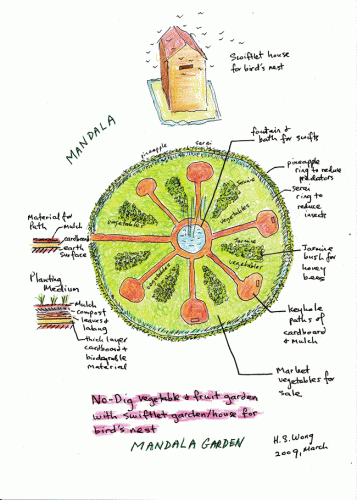
I intend to build this at the farm. The mandala shall be 40 ft across. Swifts need a roving area in front and a large water source, and that will be the mandala's centre.
The animals produce lots of gnats and mosquitoes during the wet season and swifts eat them, thus doing the farm a service.
The mandala in front will provide a conducive environment for the swifts and enhance production of the edible nests. One house will produce up to 40 kg of nests; selling for rm4,000 per kg, that's rm160,000 per house per annum.
Semi-Intensive Snake-Shaped Fish Pond
Commercial fish ponds pollute the environment and are energy intensive. Because of intensive farming, the ponds use pumps and motors to aerate. Waste are typically just discharged to the environment.
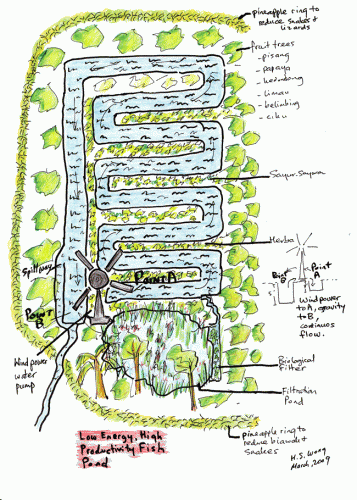
This snake shape pond will use gravity to flow the water from Point A to Point B, from Point B a wind powered pump will lift up the water to the filtration pond which shall comprise mechanical and biological filtration to clean the water. Throughout the length of the snake-shaped pond will be surface disruptors to aerate, as the water gravity-flows throughout the length of the pond.
My bank which advertises that they are 'friends' of farmers told me my mandala and bird's nest, and snake-shaped pond, is not agriculture, it's hobby farming!
Looks like I have to sell off some asset to fund these ideas. Eco-solutions have to make financial sense for farmers to adopt them. I think these two ideas can produce good income without damaging the environment.
22:03 Posted in Permaculture | Permalink | Comments (7) | Tags: permaculture, mandala garden, no-dig garden, bird's nest, swiftlets, seriti, walet, aquaculture








